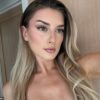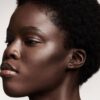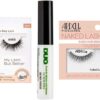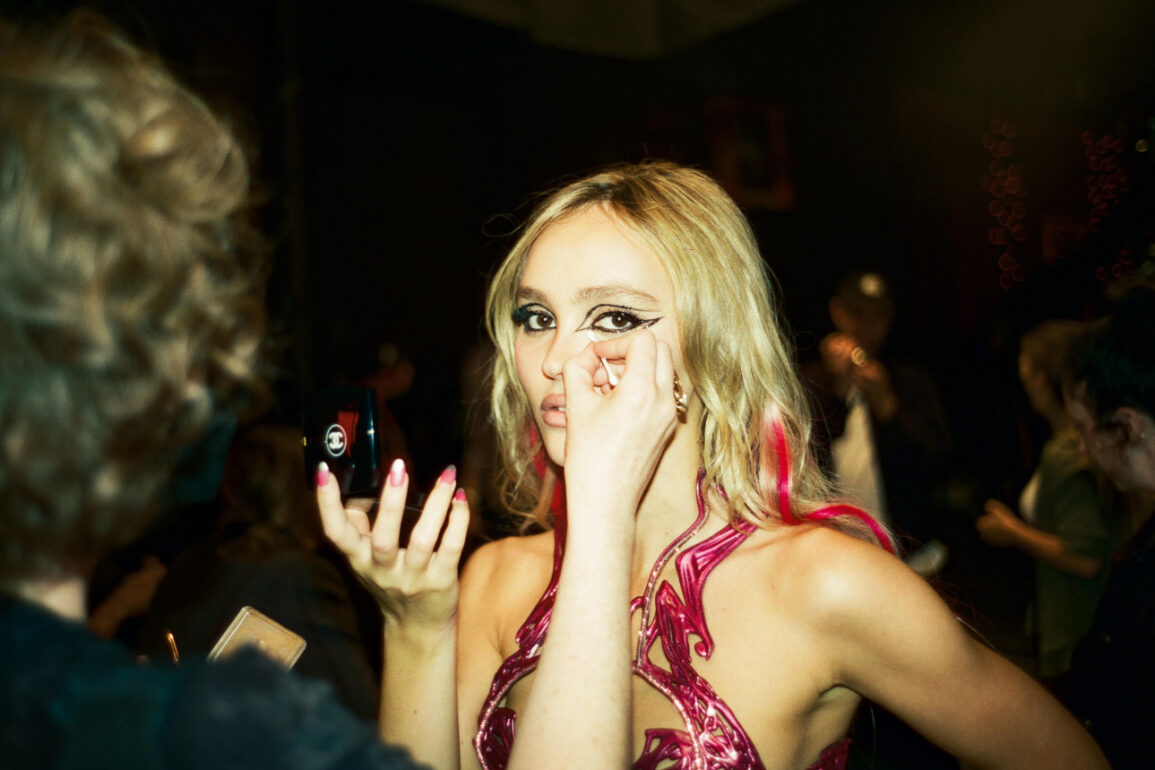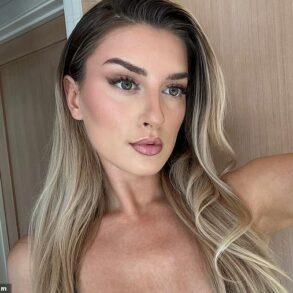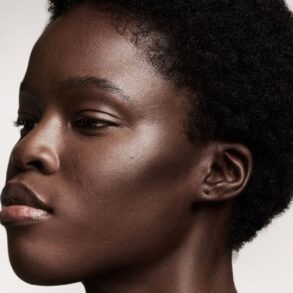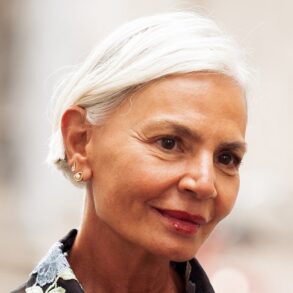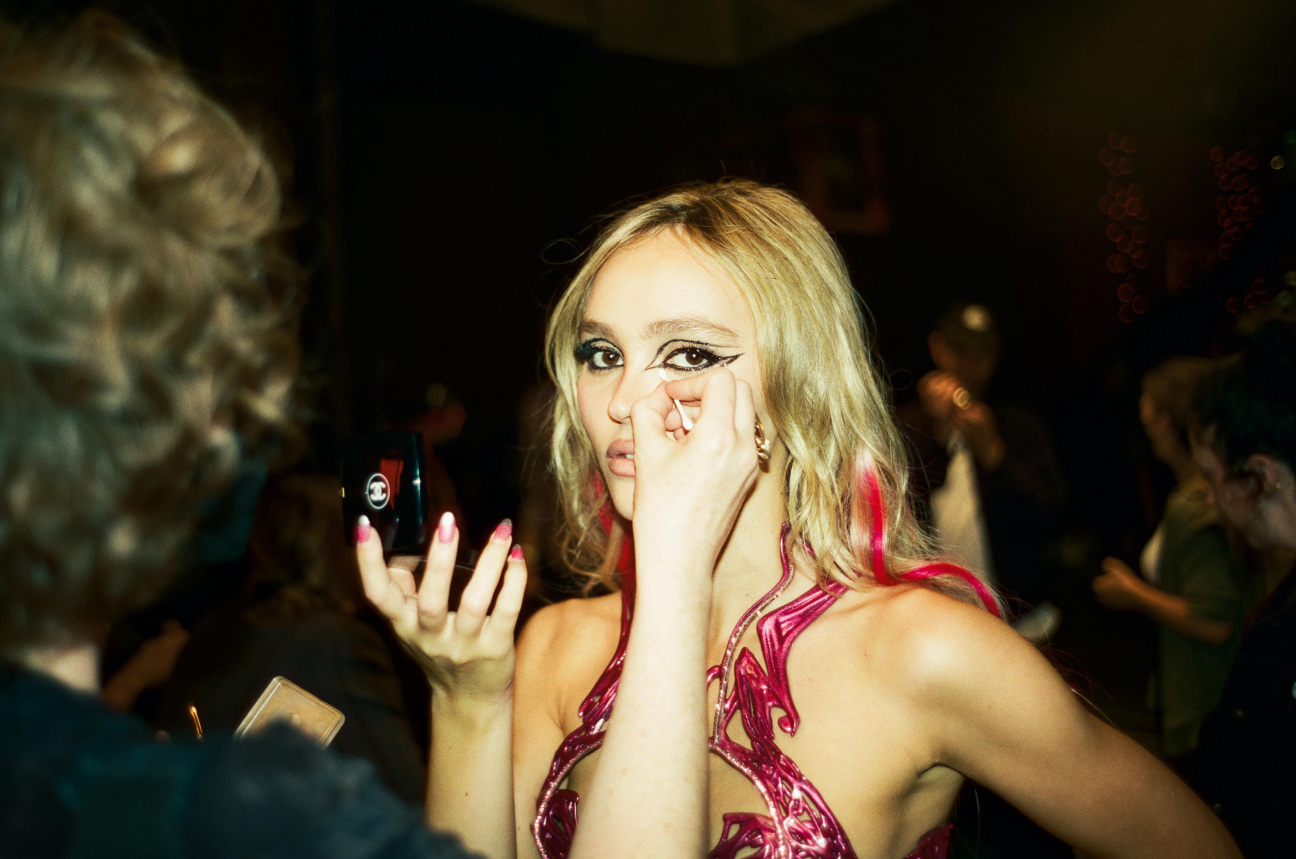
A side effect of being chronically online this summer included the words “I’m just a freak, yeah” running through your mind in an infinite loop. Content warnings and obligatory critiques aside, The Idol‘s daring and glitzy approach to fashion and beauty gave a Euphoria-deprived public something to stylistically cling to. After Sam Levinson debuted his first HBO hit in 2019, sculptural eyeliner and rhinestones became everyone’s business.
In the past four years, highly stylized makeup has burst out of runways, TV screens, and movie theaters, with teens, tweens, and makeup fiends across the country whipping out eccentric looks. Productions like Daisy Jones and The Six and Everything, Everywhere All At Once have encouraged people to swap out their usual routine for more adventurous styles.
The creative minds responsible for this seismic shift deserve the spotlight more than ever, so CULTURED chatted with four makeup artists on the key role glitter, gloss, and sweat play in telling a story, onscreen or IRL. Here, Kirsten Coleman from The Idol and Euphoria, Rebecca Wachtel from Daisy Jones and The Six, Ignacia-Soto Aguilar from The Bear, and Michelle Chung from Everything Everywhere All At Once share their wisdom.
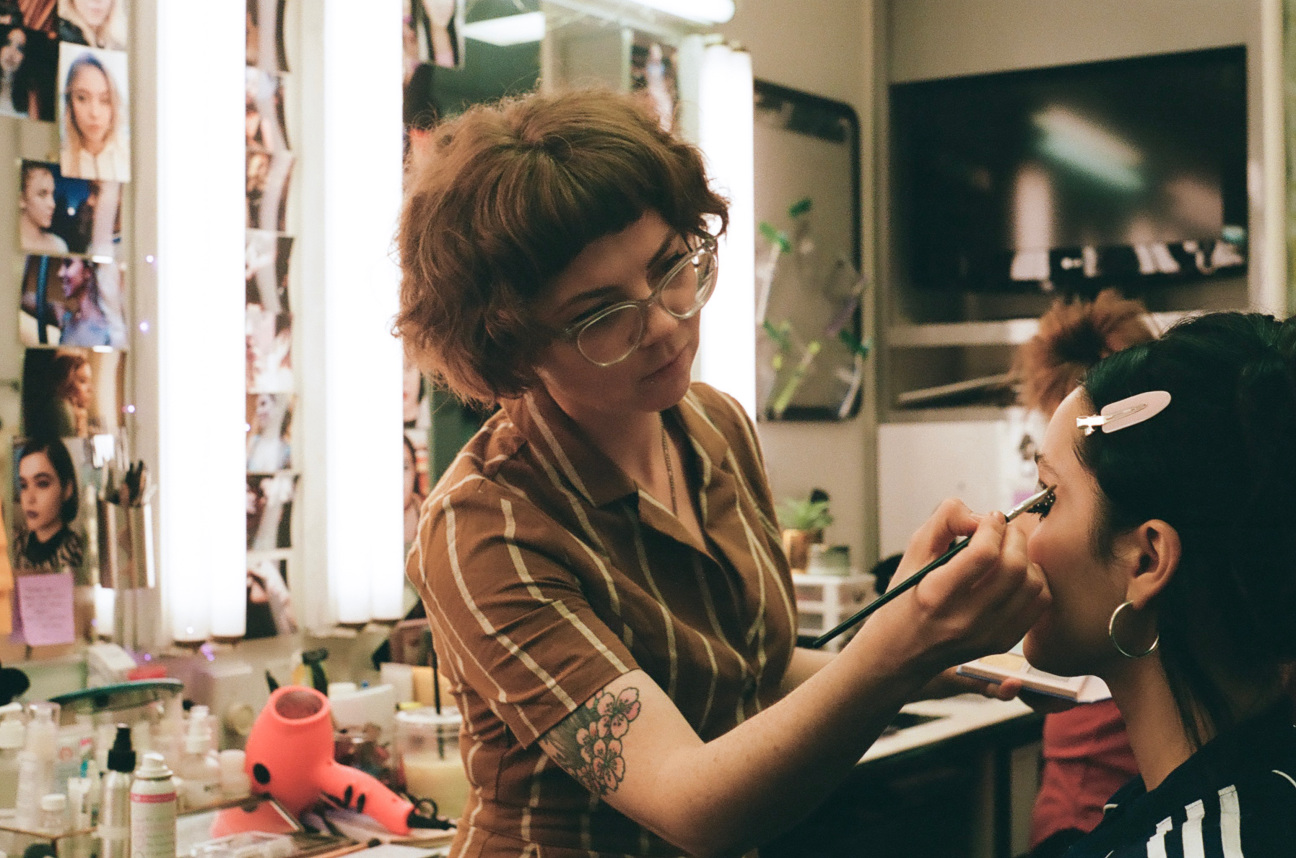
Kirsten Coleman, The Idol, Euphoria, and Don’t Worry Darling
CULTURED: Aside from the standard beauty tools and cosmetics needed to create a full look, do you have a secret ingredient you use on set?
Kirsten Coleman: Preparation H. It helps with de-puffing eyes. We also always have hand-held fans to cool actors, but my most-used item is a palo santo spray to keep my energy clean.
CULTURED: Do you notice any striking differences between working in runway/editorial makeup and makeup for a set?
Coleman: Each environment has its own level and type of stress. Usually editorial is one eight-hour day, maybe longer depending on how many looks you are doing. With film/TV, you are generally going to work 12 hours, and possibly more. It’s a game of endurance, whereas editorial can be “go go go” in a smaller time frame.
CULTURED: What product were you reaching for most on set for The Idol?
Coleman: Lip liners, a mirror, hand sanitizer, and eye drops.
CULTURED: Do you go for eye-shadow for more innocent looks and eyeliner for more intense characters or situations?
Coleman: With narrative-based work, the look has to make sense for the character and their backstory as well as where the story takes them. Geometric liner is very modern and on the forefront of fashion, so it would have to be on a character who is aligned with that world. Softer, blended looks can be for characters that are maybe more subdued or less outgoing. But that being said, I have broken all of these “rules” of thumb when the story calls for a very interesting kind of character that doesn’t adhere to these general makeup ideas. Fun fact about using rhinestones: we started using them as well as glitter on characters in season one of Euphoria because the lighting was so dark and moody we couldn’t see the makeup.
CULTURED: Do you have any predictions on what route makeup will take in the next five years?
Coleman: I believe we are headed to less structured makeup, things being less perfect and defined. Messy, smudged eye makeup that’s uneven, and more painterly applications of color.

Ignacia Soto-Aguilar, The Bear and The Hunger Games
CULTURED: What’s your secret ingredient on set?
Ignacia Soto-Aguilar: Post-It notes are great for cheating straight lines while still being gentle on skin. Also, regular tape to pick up any shimmer fallout without ruining makeup. And Pears soap! It’s a great brow soap.
CULTURED: How is working for a runway different than working on set?
Soto-Aguilar: Runway/editorial makeup is all about creating a look that complements the designer’s vision for the clothing line or the concept of a photoshoot. The makeup often has to be bold and dramatic to stand out. This can be a high-pressure environment because you’re expected to work very quickly, often on multiple models, and the makeup has to be spot on as there are no opportunities for touch-ups during the show. On the other hand, makeup for a film or TV set is about creating a look that fits a specific character and is consistent throughout the shooting, which can often take weeks or even months. This requires a deep understanding of the character and often involves research and preparation. The working hours can be long and irregular depending on the shooting schedule.
CULTURED: What is your biggest regret in terms of makeup? What would you never dare to do again?
Soto-Aguilar: Early in my career I worked on a popular network dating reality series when smudge-proof mascara was all the hype. However, smudge proof is exactly that—it’s not finale-night-tears-proof. The temperature in human tears after hours of shooting made the mascara slide off each lash hair onto the cheek of our leading lady, and it looked like I drew lashes on her with a sharpie. I was mortified. Luckily, the show runner was thrilled with how much more dramatic it made it look, and I was actually praised for it. But it taught me to never use something on camera without testing it first, even if it has glowing reviews.
CULTURED: Walk me through how you represented Carmy on The Bear’s emotions or personality.
Soto-Aguilar: Character development, personality traits, emotional state, social status, time period, health condition, symbolism and foreshadowing, character history. Makeup is a crucial tool to deliver that information to the viewer. It also may assist in informing the actor on how to deliver the character on screen if they’re a newer addition to the cast.
Carmy, for instance, we wanted the audience to be curious about him before getting to know him, and makeup had a big role in that. Benny Shields, an incredible tattoo artist, got involved during prep and designed the images for all of his trendy and highly popular tattoos. Once I had those files we were able to decide placement, the aging of each according to when he would have gotten them in his life, etc. For example, the area code on his bicep was aged more than others since we decided that was a young Carmy tattoo decision. Carmy’s tattoos get more intricate as he levels up as a chef, and viewers that know about tattoos will recognize which tattoos are more “expensive” than others. And burn scars! We designed multiple scar transfers for his arms and hands. Any legit chef knows kitchen scars are street cred, and it doesn’t get more legit than Carmy Berzatto.
CULTURED: What product were you reaching for most on set for The Bear?
Soto-Aguilar: I really owe it to Tatcha Luminous Dewy skin mist. It’s amazing for giving skin the perfect amount of glow for a starting point in the kitchen. As the scenes progress and storyline tensions elevate, Evian facial spray is an industry standard—it’s perfect for sweat touch-ups before camera rolls, and Tatcha Skin Mist’s ability at keeping Evian in place while also protecting the makeup is unmatched.
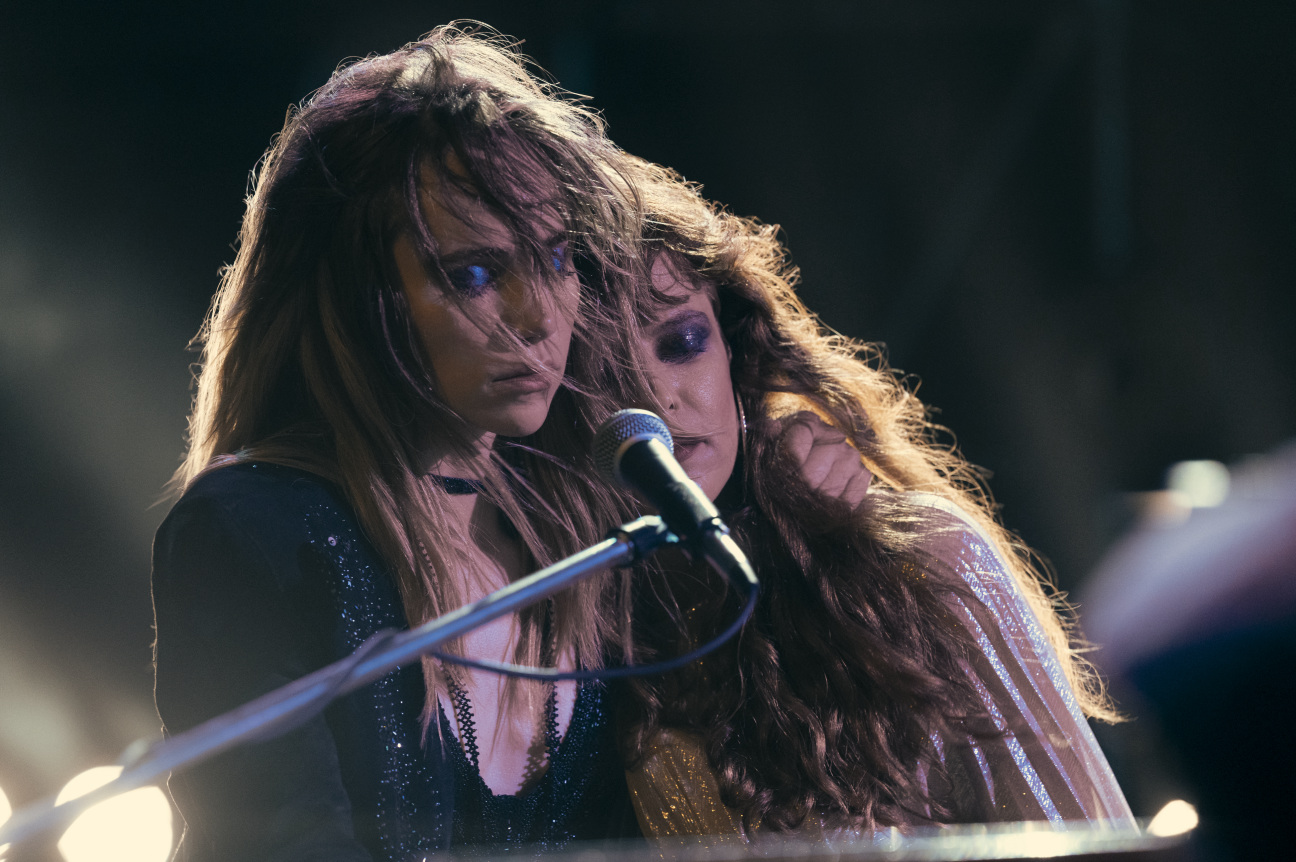
Rebecca Wachtel, Daisy Jones and The Six and Pretty Little Liars
CULTURED: Are there any tools on set that aren’t talked about enough because they aren’t as marketable or glamorous as cosmetics?
Rebecca Wachtel: Blood, sweat, and special effects of that sort. Not to get disgusting, but you have to think about things like what you’re going to use if somebody is throwing up. You go to craft service and then you put things together. For Daisy, it was all about creating a sweaty illusion. I like to try to use products that are cleaner for the skin. Jones Road’s Miracle Bomb is really nice. It gives the skin a sheen. I would put that all over for a first layer of glow, even on the guys. I really like Josie Maran’s Creamy Oil. It smells like lemon balm, very nice and clean. I use that for shine and sweat.
CULTURED: Do you notice any striking differences between red carpet makeup and makeup for a set?
Wachtel: Red carpet looks generally tend to be a little heavier—everything can be read because of the flashes. But if we’re filming for a show, it’s HD, and they’re going to be right up in the talent’s face. If you want them to look like they have no makeup on, you have to do a really flawless job. For Daisy, I wanted it to look realistic—I didn’t want the makeup to be perfect, which in some way is harder. The other makeup artists and I would often avoid touch-ups; we would leave their eyeliner even if it was messy. Something about that makes it more relatable.
CULTURED: What’s your trick for making base makeup look natural?
Wachtel: You have to approach every person with what is gonna work for them. There are certain products that are more sheer. With Riley, I used the Koh Gen Do Aqua Foundation, two different colors to brighten and contour. I used the Beauty Blender wet and really buffed it into the skin. Also lots of cream bronzers with no shimmer in them and cream blushes. And I used a highlighter from Evan Healy that’s like a cream—there’s no shimmer in it; it just makes the skin look dewy.
CULTURED: Were there specific styles you experimented with that you wouldn’t see in today’s makeup trends?
Wachtel: Facial Hair. The lead band guys couldn’t have anything too crazy because it would be distracting, but there was a lot of long sideburns action. Sometimes I would tell all the guys to come to set without shaving and we would make some really funky facial hair.
CULTURED: What product were you reaching for most while on set for Daisy Jones and The Six?
Wachtel: Chantecaille Future Skin Foundation for the three ladies. I also love Julie Hewitt’s Cheekies—they’re lip and cheek bombs. They have camellia oil in them and give a very nice sheen. Also the Endura SKIN tattoo cover.
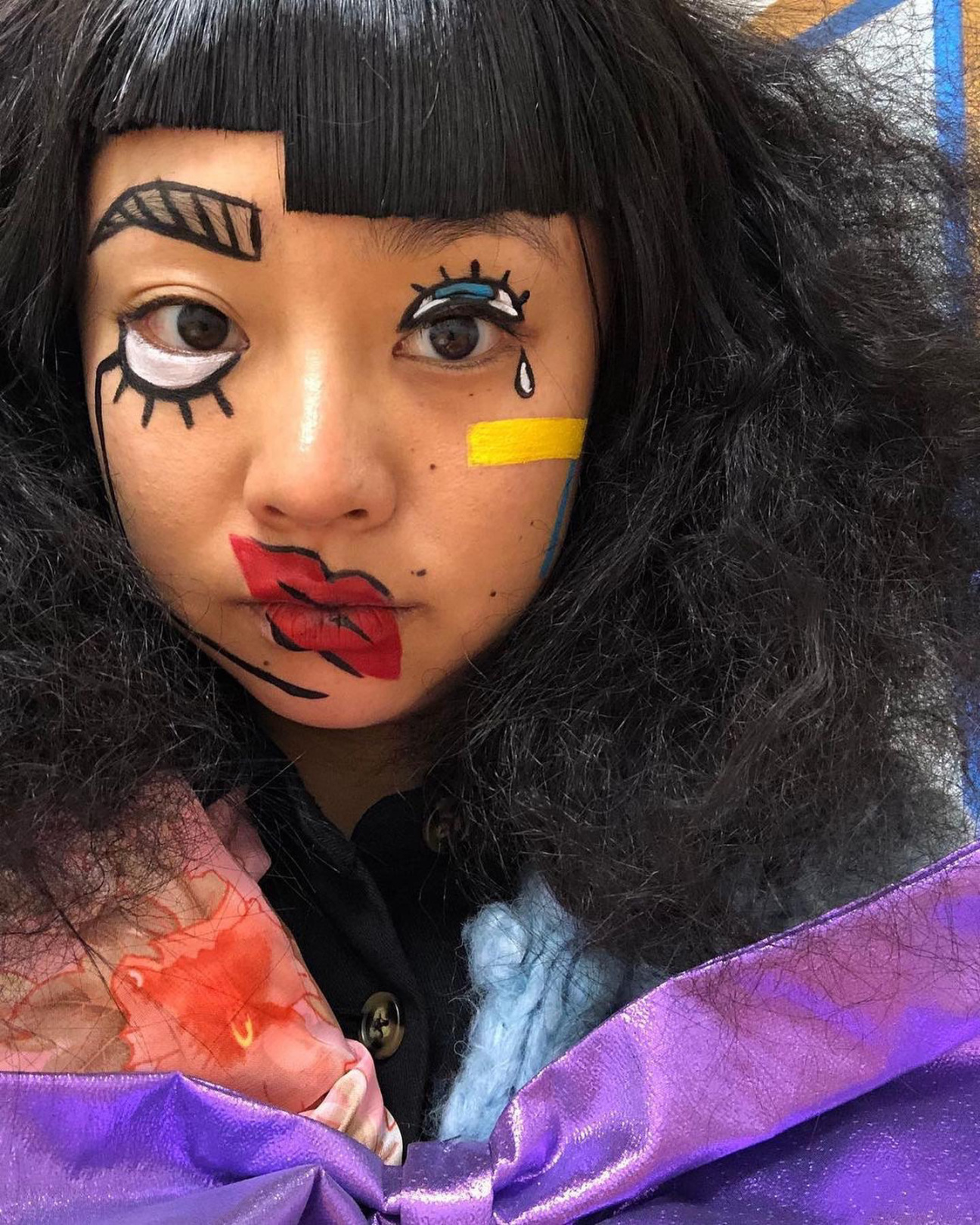
Michelle Chung, Everything Everywhere All at Once and Booksmart
CULTURED: What’s your secret ingredient on set?
Michelle Chung: I like to be as prepared as possible on set, so I have a lot of things that aren’t necessarily cosmetics, like earplugs, a first aid kit, Advil (I get asked for this the most I think), tampons. I’m basically a traveling pharmacy. Baby wipes are always on me, for cleaning hands, changing a lip color, and so much more. Snacks are a big thing I keep in the trailer and on set. We work such long hours, and yummy snacks make the day feel better. As far as tools, every job is so different. I do keep an array of facial tools, from rollers, gua sha, facial massagers, essential oils on hot towels, and sometimes even a bowl of ice. In my trailer, I love to have a speaker. Music is really great in the morning when it’s too early to talk.
CULTURED: How do you tell a story through make-up?
Chung: In Everything Everywhere All at Once, I really wanted to make sure each look for Jobu Tupaki was completely distinct from each other in each multiverse. Her mind has been fractured into all these pieces, so I wanted each universe to stand out as its own fragment.
She wears her emotions outwardly, in her makeup, hair, and clothes, so I really wanted to go extreme with her looks. With some, I even threw in literal emotions on her face, using teardrop jewels, painting hearts on her cheeks, and painting a kind of “runny nose” look for sadness. I also pulled inspiration from warrior makeup to show her willingness to fight.
CULTURED: What product were you reaching for most on set for Everything Everywhere All at Once?
Chung: I really love any cream makeup, it’s easy to work with quickly, blends out so easily, and is so versatile. I can use it on the eyes, cheeks, and lips. The MAC paint sticks in the palette were a go-to. I also used the MAC acrylic paints that didn’t actually need any touch-up on set, which was really great in some of the fight sequences. I reached for blot papers very often. I don’t love to use a lot of powder, and blot papers leave just enough shine to show real skin, which I love.
CULTURED: What is your biggest regret in terms of makeup? What would you never dare to do again?
Chung: I was a product of the ‘90s, so I over-tweezed my own eyebrows. I definitely regret doing that!
CULTURED: Do you have any predictions on what route makeup will take in the next five years?
Chung: I’m already seeing a return to the ‘90s, early 2000s—more satin and matte finishes, a lot of neutrals and browns. I’m also starting to see neons, but less glittery and blinged out, more just bright and flat. Bright pastels might be next as well. I do love that people are becoming way more experimental with their looks, so I hope that trend continues!
This post was originally published on this site be sure to check out more of their content.

